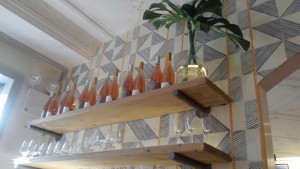
The numbers prove it. America is in love with rosé. To the tune of an over 56% increase in rosé sales by volume within The United States in 2015. For rosés from Provence, these numbers are even higher, with a growth of 58% in the same year. Given that Provence has been producing rosé for 26 centuries and makes much more rosé than both red and white, it is not difficult to understand why the region of Provence has become synonymous with fine rosés.
So what is so special about rosés from Provence? The 2600 year history of rosé cultivation in Provence for one thing. Practice makes perfect after all. Two of the red grapes that are used to make rosé, cinsault and tibouren, are also indigenous to Provence. The other red grapes used to make rosé include grenache, syrah, cabernet sauvignon, mourvedre and carignan.
Most rosés are blends of these black-skinned grapes, with cinsault, grenache and syrah being the most prevalent. Nevertheless, despite being derived from black-skinned grapes, rosé is considerably lighter in color than a red wine comprised of the same varietal.
The secret? The maceration process. The pretty pink hue that distinguishes the color of rosé is achieved through limiting the amount of time the juice remains in contact with the grape skins. The longer the contact interval between the juice and the skins, the deeper the resulting color of the wine.
The traditional saignée method of producing rosé involves bleeding some of the juice from black-skinned grapes during the maceration process when making red wine and using this juice to produce rosé. The remaining juice stays in contact with the skins to make red wine of deeper color and greater flavor concentration.
Another process involves blending white and red wine grapes to create rosé wines. This practice is rarely employed but it does exist.
The color of rosés range from a pale, almost pearlescent pink tinge to a bright, strawberry red. Rosés from Provence have a particularly pale pink hue because the grapes undergo maceration at low temperatures. This process also gives rosés from Provence their crisp and fresh character. 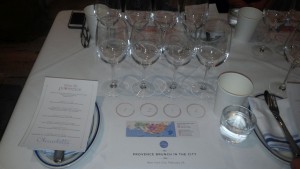
Rosés from Provence were in the spotlight on Friday, February 26, 2016 at Claudette restaurant in New York City where a Provencal-style brunch was paired with an array of choice rosés.
A trio of crostini topped with black olive tapenade, basil pistounade and truffle hummus, complemented a crisp Chateau Barbanau L’Instant Rose 2015 with notes of grapefruit, peaches and chamomile, as well as a mellow and fruity Domaine de la Fouquette Rosé Cuvée Rosée d’ Aurore 2015 with sweet passion fruit and zesty citrus notes. 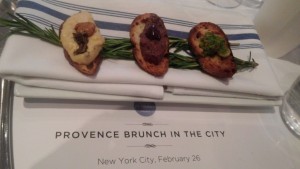
A second course of roasted vegetable aioli worked seamlessly with a lively Domaine Jacourette L’Ange et Luce Rosé 2015 with strawberry and citrus notes and a Chateau Leoube Rosé de Leoube 2015 with soft honey and strawberry notes and a hint of mint aromas. The two wines balanced out the earthy flavors of the dish. 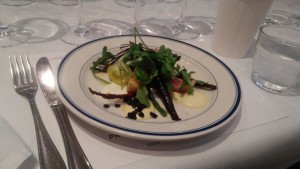
Grilled sardines over ratatouille, piquillo peppers coulis and herbes de Provence followed with a complex Maison Saint Aix Rosé 2015 that was full of concentrated cherry and spicy notes. A white wine from Provence made a rare appearance in the form of a Maison Belle Claire White 2015 with soft citrus and tropical fruit notes. 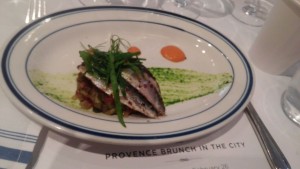
A slow braised pork cheeks accompanied by baby turnips and truffle gnocchi came with another unexpected but welcome addition. A Chateau Paradis Red 2012 that was full of fresh red fruit and spicy notes paired beautifully with the tender pork while enhancing the pungent flavors of the truffle gnocchi.
A rosé was also poured to go with the pork, and considering the red grape base of rosé, no wine and food pairing rules were broken (not that those rules are written in stone anyway). An elegant Château de Margui Perle de Margui Rosé with vivid dried apricot, peach and apple notes and a hint of honey blended with the savory flavors of the dish. 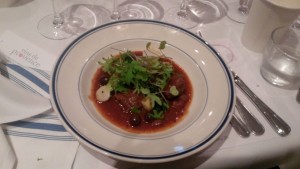
A sweet, citrus and subtly nutty Meyer lemon tart with a thin lattice-style crust, charred cardamom marshmallows and toasted pistachios was accompanied by a Château de Berne Grande Recolte Rosé 2015 that was full of ripe peach and other summer fruit notes. This vintage works equally well as a complement to a dish or an apertif. 

Be First to Comment